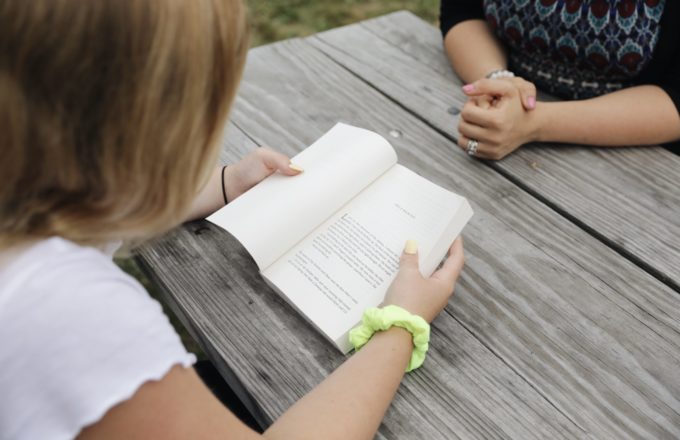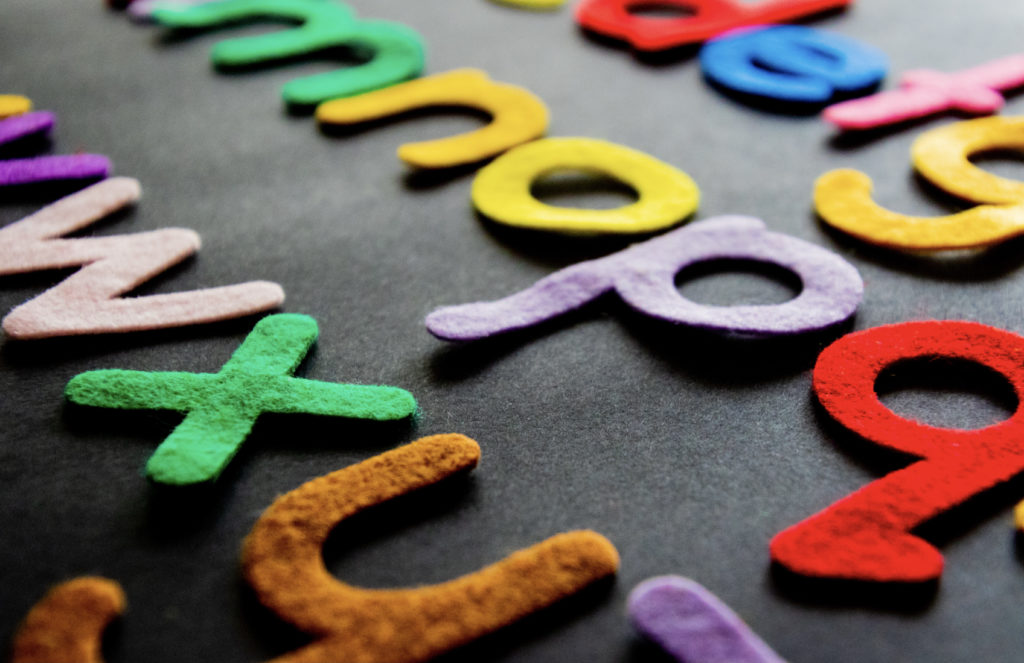This post was reprinted with permission from Joan Sedita. The original post can be accessed here and all posts by Joan Sedita can be accessed at the Literacy Lines blog.
An important strategy to help students build their vocabulary is use of context – i.e., using the clues or hints provided in the text that surround an unfamiliar word to help guess the meaning without depending on a dictionary. This can include words, phrases, or sentences that appear before, after, or close to the word. It can also include visuals or headings embedded in the text – basically anything that helps a reader understand the meaning of an unfamiliar word. Expository, non-fiction text tends to offer more context clues than narrative text.
The main goal for developing students’ ability to use context is to aid comprehension, not to teach words in-depth. When students encounter and “stumble” over unfamiliar words that are essential to making meaning of a passage, their comprehension suffers. If the context provides clues to the meanings of these words, comprehension is aided.
Use of context does not come naturally to many students. It takes time to become proficient with this strategy — students benefit from explicit instruction and guided practice. Studies have shown that when students are taught to use context clues they become better at figuring out the definitions of words compared to students who are not directly taught this skill (Kuhn & Stahl, 1998). The first step is helping students recognize when they don’t know the meaning of a word and the need to make reasonable judgements about how to address that lack of knowledge.
Types of Context Clues
There are categories of types of clues that are useful for teachers to know, described below with examples from classroom texts. Knowledge of these types of clues benefits the teacher in terms of finding examples in text to use for explicit instruction and practice. However, it is not helpful to expect students to identify the type of clue provided in text. Shanahan (2022) points out that the research synthesis noted above by Kuhn and Stahl determined persuasively that students benefit from instruction for use of context, but it was not category training that helped, only the actual practice in figuring out word meanings from context.
- Definition Clue: The word is defined directly in the text.
- Example: The nation was undergoing urbanization – the movement of people into cities.
- Example: One result of this motion is diffusion, the net movement of the particles of a substance from where they are more concentrated to where they are less concentrated.
- Description Clue: The word is described by information in the context so that the reader can figure out the meaning.
- Example: Pollination occurs when a pollen grain from a male plant lands on the stigma of a female plant.
- Example: Cities were filling with immigrants and newcomers from American farms and small towns. Too poor to rent their own apartments, they shared rooms and crammed together in tenements.
- Synonym Clue: A word that is similar to he word is provided.
- Example: Water soaks into the ground pores, or spaces, among the fragments of soil.
- Example: It was a triptych, or three-paneled, painting.
- Comparison Clue: The word is compared with other examples that are similar.
- Example: Light enters your eye through a pupil, which is like a small hole.
- Example: Cumulus clouds look like a pile of cotton balls.
- Contrast Clue: The word is contrasted with another word, usually an antonym.
- Example: Unlike a compound, an element cannot be broken down into simpler materials.
- Example: Volunteering to join the army offers the choice that a draftee does not have.
- Example Clue: A word or words that are examples are provided.
- Example: An example of mutualism is the pea crab and the mussel. Tiny pea crabs live inside mussel shells. The crabs eat the young of organisms that would harm the mussels if they grew to adults inside the shell. In return, the mussels provide protection for the little crabs.
- Example: The children could tell, from Phil’s statement about everything and everybody having a good side, that he was an optimist.
Instruction Using Classroom Text Examples
Rather than using contrived examples on worksheets to practice use of context, instruction works best when explicit instruction and guided practice is provided on a regular basis using examples from text that is already being used in the classroom. Teachers should review text and be on the lookout for examples where context clues are provided prior to assigning text for student reading.
Graves (2006, p. 99) suggests teaching students the following four-step strategy for inferring words from context:
- Read carefully and ask yourself, “Does this make sense?”
- Notice when you don’t know the meaning of a word and slow down. Read that sentence at least once more, looking for clues.
- If necessary, go back and reread the sentences before and after, looking for clues that help you figure out what the word might mean.
- When you figure out what the word might mean, substitute your guess for the difficult word and see if it makes sense. If it does, keep on reading. If it doesn’t, try again.
Context Doesn’t Always Provide Clues
It is important to emphasize with students that use of context doesn’t always work! Research shows that sometimes when readers attempt to derive the meanings of words in context they may get them wrong (Pressley et al., 2007). This may be because the student does not have enough prior knowledge to make sense of the clues in the text, or it may be that the clues are misleading. Contexts vary in how much information they provide a reader. Sometimes the context provides a direct explanation of the meaning of a word as shown in the examples of types of clues above, and in this example where the meaning of photosynthesis is directly stated in the previous sentence:
- Up to this point we have been referring to the process in which light energy is used to make food simply as the food-making process. But this important process has its own special name: photosynthesis.
Sometimes the context provides some information about an unfamiliar word, but not enough for the student to be aware of its full meaning, as shown in the example below where the student may guess that a vaccination has something to do with preventing disease, but there is not enough information to discern just what a vaccination is.
- In order to gain active immunity to a disease, one of two things must occur — either you come down with the disease, or you receive a vaccination.
Beck, McKeown, and Kucan (2002) identified some text as “misdirective” (i.e., leading to a misunderstanding). Here is an example of a misdirective from their book Bringing Words to Life where the students might wrongfully assume that Ginny admired Sandra’s dancing:
- Sandra had won the dance contest, and the audience’s cheers brought her to the stage for an encore. “Every step she takes is so perfect and graceful,” Ginny said grudgingly as she watched Sandra dance.” (p. 4)
Shanahan (2022) suggests including examples sometimes from real text where words can’t successfully be figured out from context, rather than using contrived examples to avoid what he calls “over consistency”. He points out that this is being realistic with students about how use of context really works in most reading situations.
Using Word Parts
Another strategy for determining the meaning of an unfamiliar word is to use knowledge of meaningful word parts (roots, prefixes, suffixes), which is the subject of a blog post I wrote in 2018 titled Using Morphology to Teach Vocabulary. Carlisle (2007) maintains that incidental word learning through contextual clues and morphological analysis is the primary means through which students acquire new vocabulary. Frey and Fisher (2011) suggest teaching students to “Look inside the word and outside the word to see what you know.” When used in tandem, use of word parts (inside the word) and use of context (outside the word) can be very helpful.
Additional Resources
- Article: Reading Rockets: Using Context Clues to Understand Word Meanings (2014)
- Video: Kahn Academy: Using Context Clues to Figure Out New Words (2020)
References
- Beck, I.L., McKeown, M.G., & Kucan, L. (2002). Bringing words to life: Robust vocabulary instruction. New York: The Guilford Press.
- Carlisle, J.F. (2007). Fostering morphological processing, vocabulary development, and reading comprehension. In R.K. Wagner, A.E. Muse, & K.R. Tannenbaum (Eds.). Vocabulary acquisition: Implications for reading comprehension. New York: The Guilford Press.
- Fisher, D., & Frey, N. (2008). Word wise and content rich: Five essential steps to teaching academic vocabulary. Portsmouth, NH: Heinemann.
- Graves, M.F. (2006). The vocabulary book. New York: Teachers College Press.
- Kuhn, M.R., & Stahl, S. A. (1998). Teaching children to learn word meanings from context: A synthesis and some questions. Journal of Literacy Research, 30, 119-138.
- Pressley, M., Disney, L., & Anderson, K. (2007). Landmark vocabulary instructional research and the vocabulary instructional research that makes sense now. In Richard K. Rosenshine, B., & Stevens, R. (1984). Classroom instruction in reading. In P.D. Pearson, R. Barr, M.L. Kamil, and P.B. Mosenthal (Eds.), Handbook of reading research, 745-799. New York: Longman.
- Shanahan, T. (2022). Blog post: Teaching Students to Use Context



